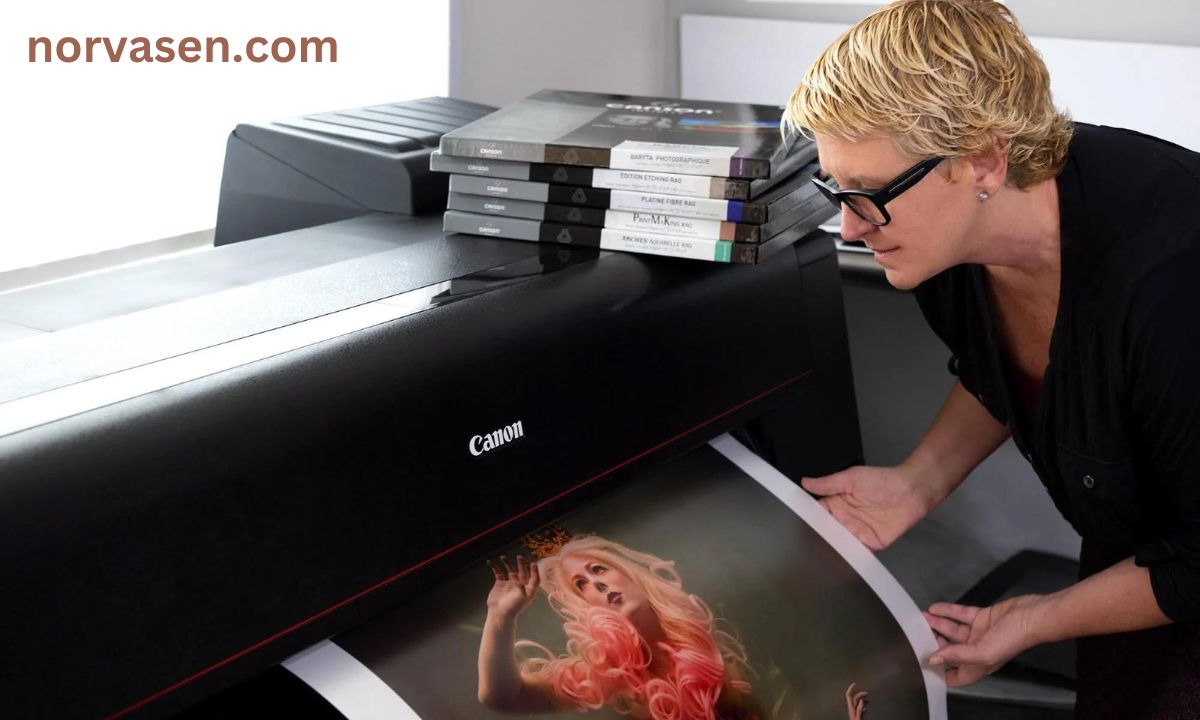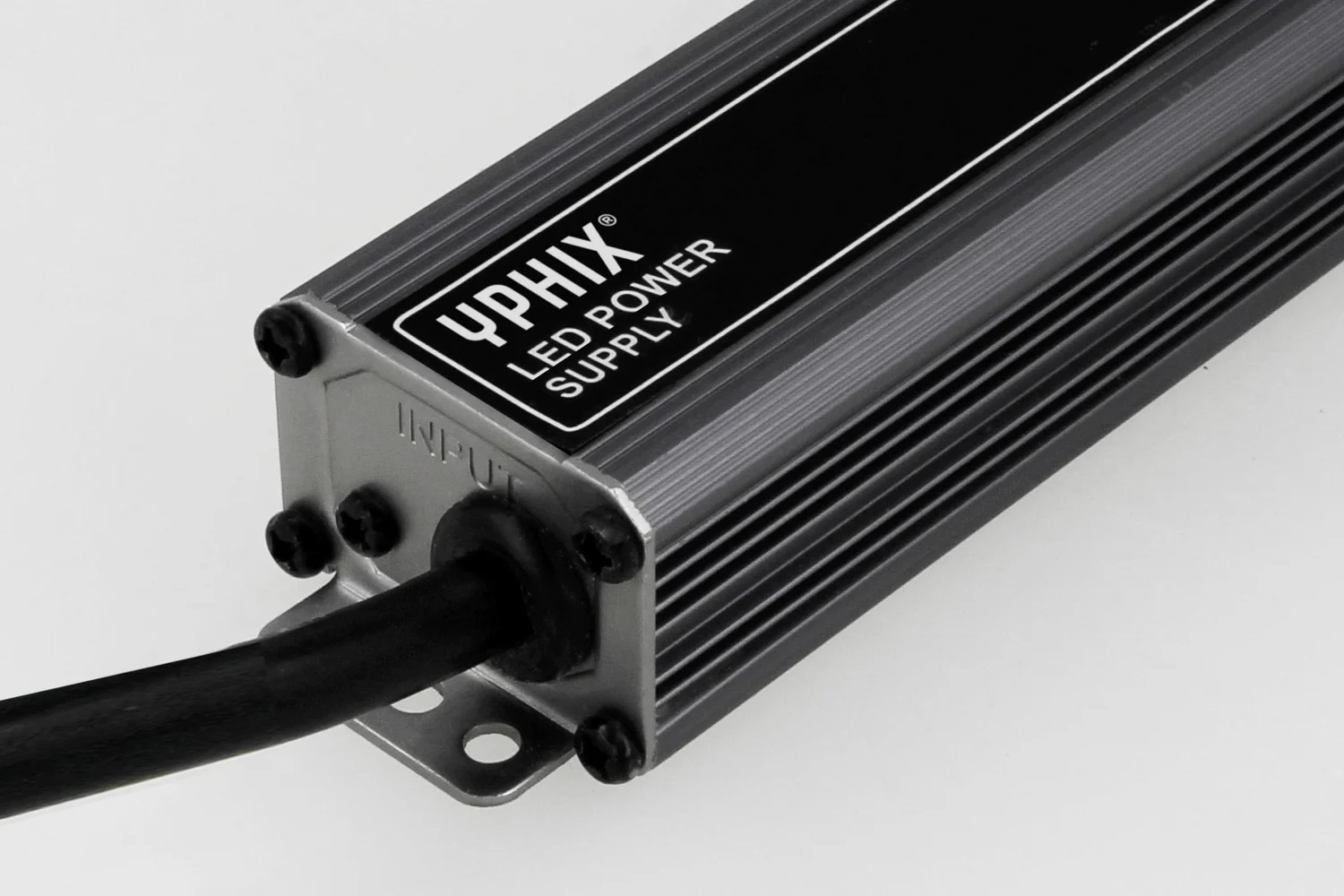Tech
Decoding Fine Art Printing: Techniques and Characteristics of Art Prints

To make correct copies of works of art, fine art printing requires special skills and high-quality supplies. Artists need these copies so that people can share and keep their work. They turn artistic ideas into lasting forms that more people can understand.
This blog post will talk about why learning about and enjoying fine art printing is so important for understanding the beauty and depth of art.
Types of Art Prints
Art prints encompass a range of techniques and styles, each with unique qualities and creative options. This exploration covers types like aquatint, collagraph, and other lesser-known methods in printmaking.
Aquatint
Aquatint mimics watercolor washes with tonal gradations by coating a metal plate with powdered resin, heating it for a porous surface, and etching it with acid. This creates textured areas for subtle shading and atmospheric textures in prints.
Collagraph
Collagraph involves creating a textured plate using collaged materials like cardboard, fabric, or found objects. After sealing and inking the plate, it’s pressed onto paper to transfer textures and shapes, offering artists a realm of creative experimentation.
Other Types
Beyond aquatint and collagraph, the world of art prints includes numerous other techniques that add depth and diversity to printmaking. Some of these lesser-known methods include:
- Lithography: A process based on oil and water repelling each other, allowing artists to create intricate and colorful prints.
- Screen Printing: A stencil-based technique where ink is forced through a fine mesh onto a surface, popular for its vibrant colors and graphic clarity.
- Woodcut and Linocut: Relief printing methods where the image is carved into a block of wood or linoleum, with the raised areas holding ink for printing.
- Etching: Using acid to bite into a metal plate, creating lines and textures that hold ink for printing, often used for detailed and intricate prints.
- Monotype: A unique method where the image is painted or drawn onto a smooth surface and transferred to paper, resulting in one-of-a-kind prints.
Techniques and Methodologies
Artistic techniques and methodologies encompass a wide spectrum, from traditional methods that have stood the test of time to modern approaches that embrace cutting-edge technology.
Traditional Techniques: Etching and Engraving
Etching and etching are very old ways to make prints.
Acid is used in etching to make lines and shapes on a metal plate. The artist covers the plate with something that won’t react with acid, etches their image into it, and then puts the plate in an acid bath. Etched lines are made with this method, which is great for exact art expression and fine linework.
Burins are used to cut into a metal plate during engraving. The raised lines and textures hold ink for printing, giving the lines and textures a unique look that makes printed pictures look better.
Modern Techniques: C-Type Printing
A chromogenic process is used in C-type printing to make high-quality prints from digital files. This method combines old-fashioned skills with modern digital technology. This method produces vivid colors, fine details, and a range of tones. It also allows for exact color control, smooth digital integration, and the creation of very clear large artworks.
Unique Styles, Textures, and Tones
Each method adds something different to artistic expression.
Etching and engraving are traditional methods that are valued for the handcrafted quality, fine details, and rich textures that come from skilled craftsmanship. They are thought to evoke tradition and grace.
Modern methods like C-type printing give artists exact control over color, tone, and detail through digital workflows. This lets them try new things and combine elements in ways that don’t stand out, making modern works of art that combine creative new ideas with technological progress.
Materials Used in Fine Art Printing
Fine art printing relies on quality materials like premium canvases, archival pigment-based inks, and the right paper for durability and aesthetics. Explore these vital components further.
Premium Canvases and Archival Pigment-Based Ink
Fine art printing uses top-tier materials. Durable premium canvases made from archival-grade materials preserve colors and details for years. Archival pigment-based inks offer lasting vibrancy and color accuracy compared to dye-based inks prone to fading. This combination ensures fine art prints maintain allure and value over time.
Choosing the Right Paper: Critical in Fine Art Printing
Paper selection impacts appearance, texture, and longevity. Weight and thickness affect durability, with heavier papers offering better resistance. Surface texture and finish, like matte or glossy, influence aesthetics and color interaction with light. Archival quality ensures paper remains vibrant without degradation.
The Process of Fine Art Printing
Fine art printing involves a detailed process that turns digital or traditional artworks into high-quality prints. This process combines technical expertise with the artist’s vision. Explore the step-by-step process of fine art printing, the artist’s role, and what sets fine art prints apart.
Step-by-Step Process of Fine Art Printing
- Image Preparation: Adjustments are made to color, resolution, and format for optimal print quality.
- Proofing: Artists create proofs to check colors, tones, and details before final printing.
- Print Production: High-quality materials like archival paper and pigment-based inks are used to meet industry standards.
- Finishing Touches: Trimming, signing, and numbering add authenticity and value to prints.
- Quality Control: Measures are taken throughout to ensure color accuracy, sharpness, and durability.
Role of the Artist
Artists guide image preparation, color adjustments, and proofing to achieve their vision and maintain authenticity.
Characteristics of Art Prints
Fine art prints encompass a variety of techniques, each with unique characteristics and purposes:
- Giclée Printing: Utilizes high-resolution inkjet printers to produce detailed prints with vibrant colors, ideal for photographic and digital artworks.
- Screen Printing: Involves transferring ink through a stencil onto a surface, offering bold colors and textures suitable for limited edition prints.
- Lithography: Utilizes a flat surface treated to attract ink, creating nuanced prints with rich color gradients, commonly used for reproducing paintings and illustrations.
- Etching and Engraving: Printmaking techniques involving incising or etching lines onto a surface, producing intricate and textured prints favored for detailed artworks.
Each technique serves different artistic purposes, allowing artists to choose the method that best complements their style and vision.
How to Identify a Fine Art Print
Look for high-resolution details, archival materials, authentication signs like signatures and numbers, and knowledge of printmaking techniques.
Start Exploring and Appreciate Fine Art Prints
Fine art printing is important for keeping art in good shape. This method makes sure that the artist’s idea is followed. Artists are very important for keeping things real. Fine art prints use a variety of methods and have unique details that can be found on archival materials and signs of authenticity. You are urged to look into and enjoy fine art prints for their creativity and long-lasting value.
Tech
The Growing Importance of Reliable LED Power Supply Suppliers in the Global Lighting Industry

In recent years, LED lighting has revolutionized the way we illuminate our homes, offices, streets, and industrial facilities. With its high efficiency, long lifespan, and environmental benefits, LED technology has rapidly replaced traditional lighting sources such as incandescent and fluorescent lamps. However, one of the most critical yet often overlooked components in LED lighting systems is the LED power supply. As demand for LEDs continues to grow worldwide, the role of LED power supply suppliers has become increasingly important for ensuring quality, reliability, and innovation in the lighting industry.
An LED power supply, also known as an LED driver, is responsible for converting the incoming electrical current into a stable and suitable form that powers the LEDs. Since LEDs require specific current and voltage conditions to operate efficiently, the power supply plays a vital role in determining the performance, safety, and lifespan of the lighting system. A well-designed LED power supply ensures consistent brightness, prevents flickering, and protects against power surges or overheating. Therefore, choosing the right LED power supply and working with reliable suppliers are essential steps for any lighting manufacturer or project integrator.
The Role of LED Power Supply Suppliers in Quality Assurance
High-quality LED lighting products depend heavily on the capabilities and expertise of their suppliers. Leading LED power supply suppliers not only provide stable and energy-efficient products but also ensure compliance with international standards such as CE, UL, RoHS, and FCC. These certifications demonstrate that their power supplies meet safety, environmental, and performance requirements. Moreover, reputable suppliers typically have robust quality control systems and testing facilities to ensure that each unit performs consistently under different environmental conditions.
In today’s competitive market, LED power supply suppliers also play an essential role in helping manufacturers achieve cost efficiency. Through innovation and economies of scale, they can reduce the cost per unit while maintaining product quality. This enables lighting brands to offer affordable yet high-performance solutions to consumers and businesses. Furthermore, suppliers often work closely with their clients to customize solutions for specific applications, such as architectural lighting, industrial lighting, horticultural lighting, or smart city infrastructure.
Innovation and Technology Development
Innovation is a key differentiator among LED power supply suppliers. With rapid advancements in smart technology, the demand for intelligent power supplies has surged. Modern LED drivers now often include features such as dimming capability, remote monitoring, wireless control, and integration with Internet of Things (IoT) systems. These advanced features allow users to control brightness, color temperature, and energy consumption through mobile apps or centralized control platforms, offering both convenience and energy efficiency.
Leading suppliers are investing heavily in research and development to create more compact, efficient, and eco-friendly power supply solutions. The focus is shifting toward achieving higher energy conversion rates, improved thermal management, and longer lifespans. In addition, as governments and organizations emphasize sustainable development, suppliers are developing products that support renewable energy systems, such as solar-powered LED lighting.
Global Supply Chain and Market Trends
The global LED power supply market is highly competitive and dynamic. Suppliers from countries such as China, Taiwan, South Korea, Germany, and the United States dominate the industry, each contributing unique strengths. Chinese LED power supply suppliers, for instance, have gained a significant share of the global market due to their cost-effective manufacturing capabilities and rapid product innovation. Many international lighting brands source their drivers from China because of the country’s well-established electronics supply chain.
However, as global demand continues to rise, challenges such as raw material shortages, fluctuating energy costs, and international trade policies can impact supply chain stability. To address these issues, many suppliers are adopting more resilient business models, such as establishing regional production centers, diversifying their supplier base, and using advanced logistics technologies. These strategies help ensure timely delivery, consistent quality, and cost control for their global customers.
Selecting the Right LED Power Supply Supplier
When selecting a supplier, lighting manufacturers and distributors must consider several key factors. First, product reliability and certification are essential to ensure compliance with safety and performance standards. Second, technical support and after-sales service play a significant role, especially for large-scale lighting projects. A responsive supplier can help troubleshoot issues, provide design recommendations, and offer firmware updates for smart drivers. Third, customization capabilities are increasingly important, as different lighting applications require unique voltage, current, and control specifications.
Furthermore, sustainability is becoming a core selection criterion. Many companies now prioritize suppliers who adhere to green manufacturing practices, use recyclable materials, and minimize waste in production. This alignment with environmental values not only enhances brand reputation but also supports global sustainability goals.
The Future of LED Power Supply Suppliers
Looking ahead, the role of LED power supply suppliers will continue to expand as lighting technology evolves. The integration of artificial intelligence (AI), IoT, and advanced energy management systems will require more sophisticated power solutions. Suppliers who can adapt to these trends and offer smart, efficient, and eco-friendly products will gain a competitive advantage in the global market.
Additionally, as renewable energy and electric mobility continue to grow, LED power supply technologies may find new applications beyond lighting — such as in charging systems, energy storage, and smart grid solutions. This diversification offers exciting opportunities for both established and emerging suppliers in the industry.
Conclusion
In conclusion, LED power supply suppliers are at the heart of the rapidly evolving LED lighting ecosystem. Their products directly influence the efficiency, safety, and intelligence of lighting systems across residential, commercial, and industrial sectors. By providing reliable, innovative, and sustainable solutions, these suppliers not only support the growth of the LED industry but also contribute to a more energy-efficient and environmentally friendly world. As the global market continues to expand, collaboration between manufacturers, designers, and LED power supply suppliers will remain essential for driving the next generation of lighting innovation.
Tech
6 Myths About Solar Energy Debunked

In recent years, the popularity of solar energy has skyrocketed as more homeowners recognize its potential benefits. Despite this increase in interest, many people are still held back by incorrect beliefs about solar energy.
Let’s explore six common myths surrounding this renewable energy source and the facts that debunk them in this solar installation guide.
1. Solar Energy is Too Expensive
One of the most widespread misconceptions about solar energy is that it is prohibitively expensive. While the initial investment for a solar power system can be significant, various financing options are available.
Many states also offer tax credits, rebates, and incentives that can greatly reduce costs. In fact, the long-term solar energy savings makes it one of the most energy-efficient solutions for homeowners!
2. Solar Panels Don’t Work in Cloudy Weather
Another prevalent myth is that solar panels aren’t effective unless it’s sunny all the time. While it’s true that solar panels are most efficient during direct sunlight, they can still generate energy on cloudy or rainy days.
In fact, most modern solar panels are designed to capture even diffused sunlight effectively.
3. Solar Energy Requires Too Much Maintenance
Many people think that once they install a solar power system, maintenance will be a headache. On the contrary, they are relatively low-maintenance.
Regular cleaning and occasional inspections are usually all that’s needed. Most manufacturers also provide warranties to cover any potential issues.
4. Installing Solar Panels Will Ruin Your Roof
Some homeowners fear that installing solar panels will damage their roofs. In reality, reputable solar installers know how to effectively mount panels without compromising the integrity of your roof.
Proper installation can actually improve your roof’s lifespan by protecting it from elements like UV rays and rain.
5. Solar Energy is Not Available Everywhere
While it’s true that solar energy is more effective in certain geographic locations, it is available almost everywhere. Cities and towns across the country, even in less sunny regions, are utilizing solar energy.
Innovative technology ensures that solar panels can efficiently generate power regardless of the climate. When in doubt, consult a renewable energy expert for region-specific advice.
6. Solar Panel is the Only Available Solar Energy Solution
Many people assume that solar panels are the only effective way to lower energy bills, but that isn’t true. Daylight solutions like Solatube can capture natural sunlight and channel it into interior spaces, reducing the need for artificial lighting during the day.
Visit https://thesolarguys.com/ to find out how to get started!
Don’t Let Myths Hinder Your Solar Journey!
Understanding the facts behind solar energy can empower homeowners to make informed decisions. By debunking these five myths, we can foster a clearer understanding of how solar energy can benefit us all. If you’re considering a shift to solar, take the leap and explore the options available to you!
As you plan your transition to renewable energy, consider working with experienced professionals who can guide you through the process. Don’t let misconceptions hold you back from harnessing the power of the sun.
Looking for more home improvement advice? Dive into our other blog posts for expert tips and inspiration!
READ ALSO: How to Maximise Energy with Solar Panel Cleaning Services
Tech
waxillgro279: Understanding Your Digital Identity

Did you know that the average person has over 90 online accounts? Each one requires a username, and many of those are autogenerated strings of characters you’d never choose yourself. That’s where an identifier like waxillgro279 comes in. It might look like random keyboard smashing, but it represents a much bigger story about your life online.
In this guide, we’ll pull back the curtain on these computer-generated usernames. We’ll explore what they are, why they matter for your security, and how you can manage them effectively. Let’s dive in.
What Exactly Is waxillgro279?
Before you assign any meaning to it, it’s crucial to understand that waxillgro279 is a prime example of a context-dependent identifier. In plain English, it’s a unique name created by a system, not a person.
Think of it like a digital license plate. It’s not meant to be poetic or memorable; its main job is to be unique. You might encounter a handle like this in several places:
- A new user account on a website or app.
- A temporary project ID in collaborative software.
- A transaction reference number for an online order.
- An auto-saved file name from a document editor.
The key takeaway? waxillgro279 itself has no inherent meaning. Its purpose is entirely defined by the system that generated it. You must check the source—the email, webpage, or app where you found it—to understand its true function.
A Step-by-Step Guide to Managing Autogenerated Identifiers
Finding a cryptic username in your inbox can be confusing. Here’s a simple, friendly guide to figuring out what to do with it.
- Don’t Panic or Assume. Your first reaction might be, “What is this? Is this a virus?” Remember, these identifiers are usually benign. Take a deep breath and proceed calmly.
- Verify the Source Immediately. This is the most critical step. Where did you see waxillgro279?
- Email: Check the sender’s address carefully. Is it from a company you know and trust, like Amazon, your bank, or a project management tool like Asana? Look for signs of phishing—poor grammar, urgent threats, or mismatched links.
- App or Website: Are you logged into a service? Check your account settings or notification center within the app itself. Never click on links from an unverified source.
- Understand Its Context. Once you’ve confirmed the source is legitimate, figure out the identifier’s role.
- Is it your new username for logging in?
- Is it a reference number for a customer support ticket?
- Is it a unique key for accessing a shared document?
- Decide on an Action.
- Save It: If it’s a important login ID or reference number, save it in a secure password manager or a trusted note-taking app.
- Ignore It: If it’s a temporary, one-time code, you can usually disregard it once you’ve used it.
- Change It: Many services allow you to change an autogenerated username to something more memorable in your account settings.
Why These Random Identifiers Actually Protect You
You might wonder why companies don’t just let you pick all your usernames. It seems like it would be easier! The truth is, autogenerated IDs like waxillgro279 play a huge role in modern online security.
Using a unique, random string makes it incredibly difficult for hackers to guess your login credentials through so-called “brute force” attacks. If every username was a common first name, accounts would be far less secure.
The chart below shows the relative strength of different types of usernames against automated hacking attempts. As you can see, a random alphanumeric string is significantly more robust than a common name or word.
Common Mistakes to Avoid
When dealing with these computer-assigned handles, a few missteps can cause headaches or even security risks.
- Treating It as Spam Immediately. Deleting that “welcome” email with your new user ID might mean you lose your only way to access a service you signed up for.
- Using It Across Multiple Sites. Never use the same password for waxillgro279 that you use for any other account. Its randomness is a strength, but password reuse is a critical weakness.
- Assuming All Autogenerated Messages are Safe. Scammers are clever. They know this trend and might send fake emails with similar-looking IDs. Always, always verify the source first.
Your Next Steps: Taking Control of Your Digital Self
Your online identity is a collection of these tiny data points. Managing them well is key to a secure and streamlined digital life. Here are your three key takeaways:
- Context is King. A string like waxillgro279 is meaningless without knowing where it came from. Verify the source before you do anything.
- Embrace the Randomness. These complex identifiers are a layer of security, not an inconvenience. They help keep your accounts safe from automated attacks.
- Use a Password Manager. This is the single best tool for storing these hard-to-remember usernames and generating strong, unique passwords for each of them.
What’s one change you’ll make today to better manage your digital footprints?
You May Also Read: Ovppyo: Emerging AI-Driven Automation Concept Explored
FAQs
I found “waxillgro279” in an email. Is it a virus?
Not necessarily. It is almost certainly an autogenerated username or ID from a legitimate service you signed up for. Carefully check the sender’s email address to verify it’s from a company you trust.
Can I change my autogenerated username?
In many cases, yes. Once you log into the service using the provided credentials, check your account settings or profile page. There is often an option to change your username to something more memorable.
Why do companies use such hard-to-remember names?
Primarily for uniqueness and security. Automated systems guarantee that no two users have the same ID, preventing conflicts. The randomness also makes it harder for bots to guess usernames during login attempts.
Should I be worried about privacy with these identifiers?
These IDs are typically designed to be anonymous and don’t contain personal information. However, always review the privacy policy of the service generating it to understand what data they associate with your account.
What’s the best way to keep track of them?
A dedicated password manager is highly recommended. It securely stores all your usernames, passwords, and notes, so you only need to remember one master password.
Is “waxillgro279” a product I can buy?
No. Based on its structure and common usage online, it is an identifier, not a commercial product. Be highly skeptical of any site trying to sell you something using this term.
What if I lose this username?
Use the “Forgot Username” or “Help” link on the service’s login page. You will typically need to provide the email address associated with the account, and they will send you a reminder.
-

 Education11 months ago
Education11 months agoMastering Excel: Your Comprehensive Guide To Spreadsheets And Data Analysis
-

 Tech1 year ago
Tech1 year agoHow To Choose The Best Forex Trading Broker?
-

 Business1 year ago
Business1 year agoExploring the Rental Market: Properties for Rent in Malta
-

 Blog11 months ago
Blog11 months agoArab MMA Fighters Shine Bright: Meet the Champions of PFL MENA
-

 Travel1 year ago
Travel1 year agoExperience the Best Desert Safari Dubai Offers!
-

 How-To Guides2 years ago
How-To Guides2 years agoComprehensive Guide to Cockwarming: Enhancing Intimacy and Connection
-

 Home Improvement2 years ago
Home Improvement2 years agoEco-Friendly Round Rug Options for Sustainable Living in NZ
-

 Apps and Games2 years ago
Apps and Games2 years agoDiscover Tickzoo: The Ultimate Platform for Video Content Lovers and Creators
